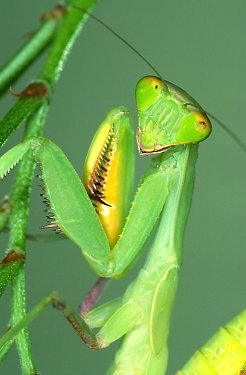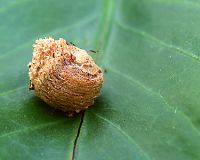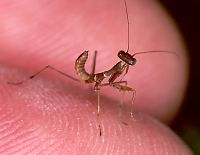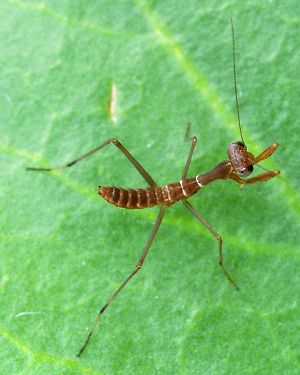|
HOME |
|

|
HOME |
|

Praying Mantids are predatory insects that live in warm areas. They start life in tiny egg cases, laid on a leaf.

Mantids undergo simple (incomplete) metamorphosis; during early life stages, they look like small, wingless adults.

DIET
Praying Mantids eat flies, aphids, moths, butterflies, and many other insects (including other mantids). They catch their prey with their strong front legs. Praying Mantids are useful in gardens, since they control the insect population. They will only eat live insects.
|
|
This praying mantis is eating a cricket.
They are fascinating to watch when they keep their legs clean by running them through their mouth. An important part of their predatory equipment is their spiny forearms. They use these to capture their prey. They strike out with lightning speed, pull the prey in and usually start to eat the head first. Eating their prey's head first helps to keep them from being injured by their own dinner. These spiny arms are also used for defense. |
ANATOMY
Praying Mantids are green or tan, camouflaging them among plants. Like all insects, they have 6 jointed legs, a three part body (head, thorax, and abdomen), 2 antennae, compound eyes, and a hard exoskeleton. Mantids can rotate their head in almost a full circle. Praying Mantids have an elongated prothorax that looks like a neck. Most adult mantids are from 5-15 cm long. Females are larger than the males.

PREDATORS:
Praying Mantids are eaten by bats, birds and wasps.